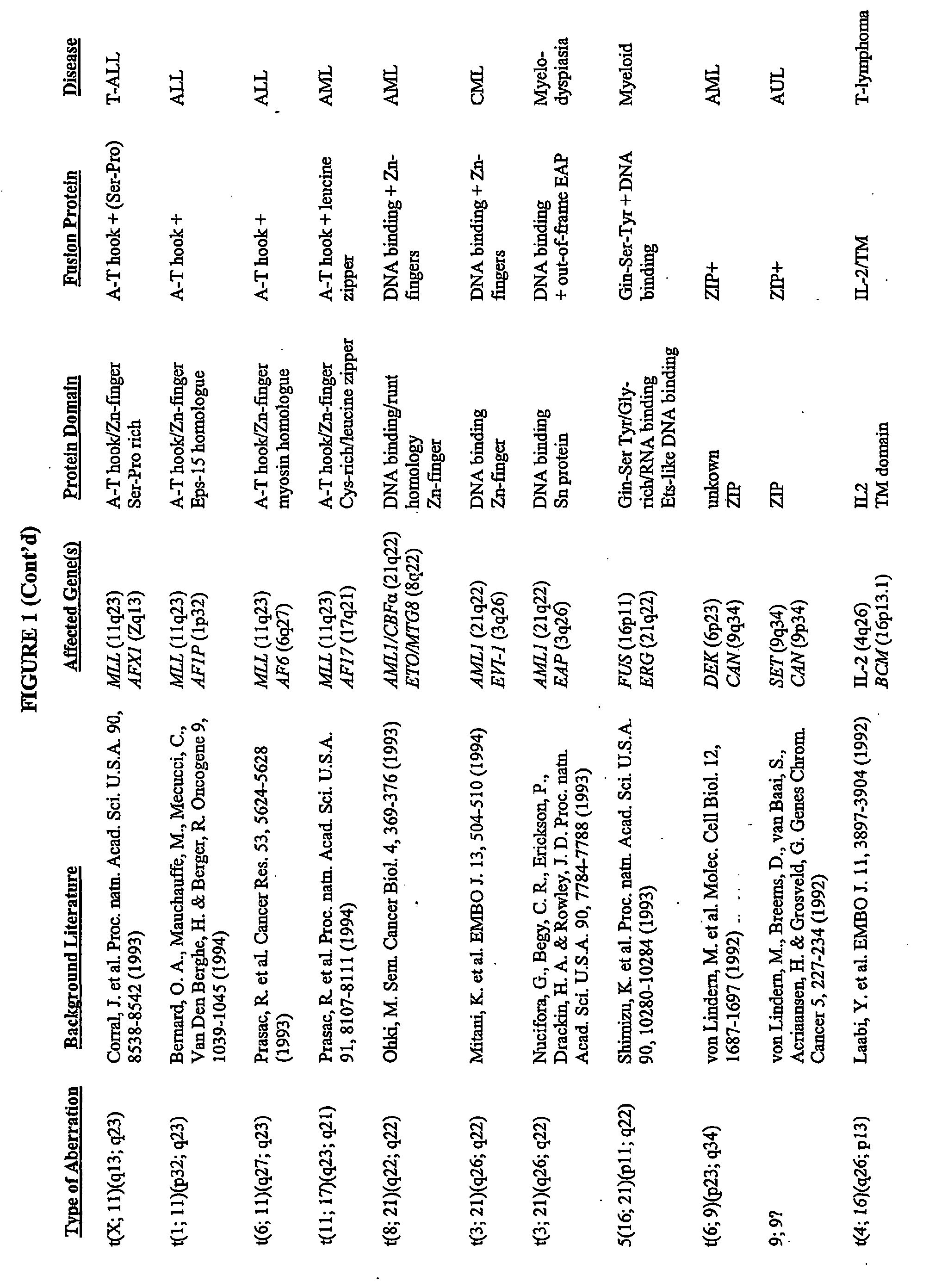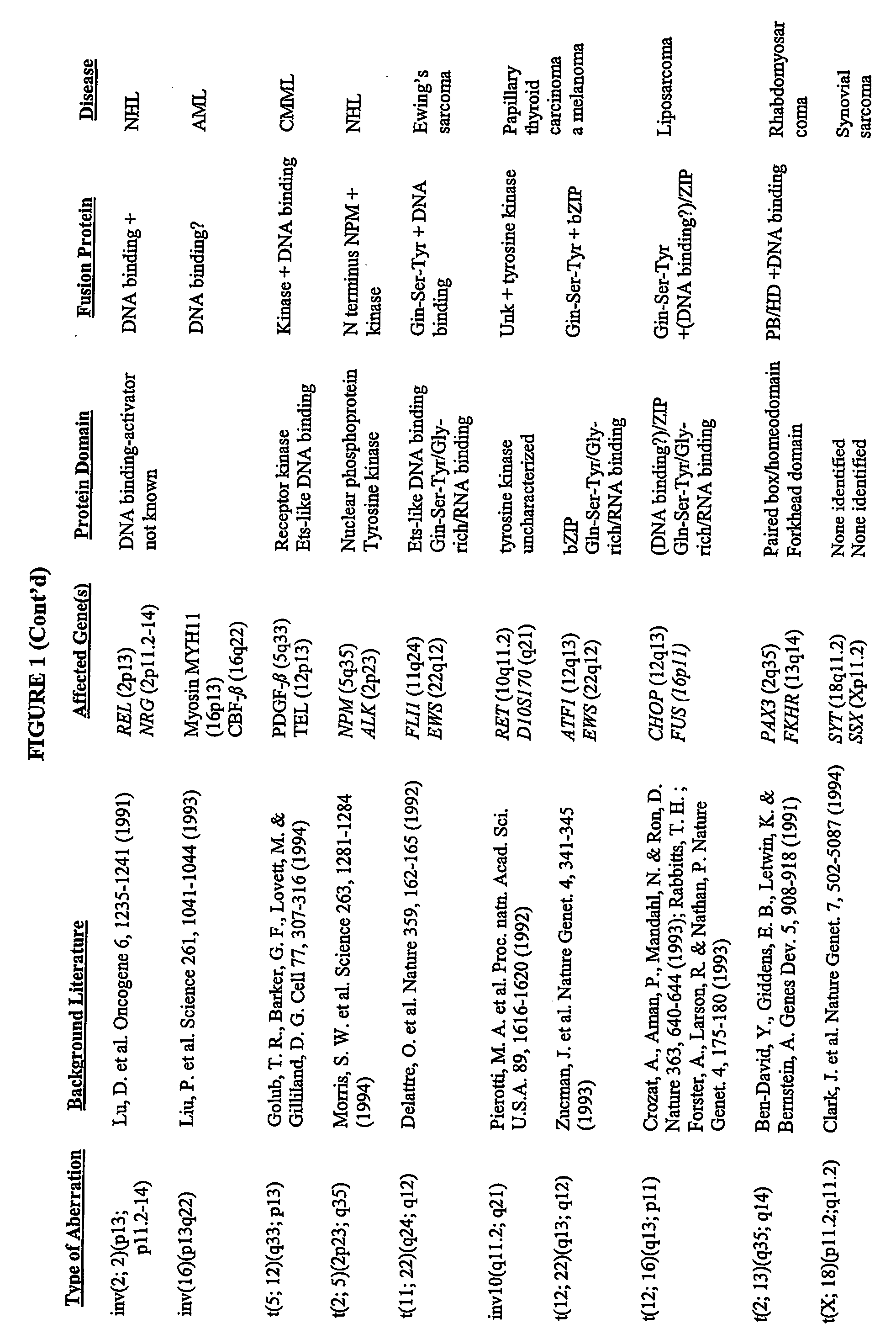Methods for treating genetically- defined proliferative disorders with hsp90 inhibitors
a technology of hsp90 inhibitors and proliferative disorders, applied in the direction of biocide, drug composition, instruments, etc., can solve the problems of ineffective or less effective against normal cells
- Summary
- Abstract
- Description
- Claims
- Application Information
AI Technical Summary
Benefits of technology
Problems solved by technology
Method used
Image
Examples
example 1
Cytotoxic Activity of 17AAG on K562 Versus a Normal Cell Type
[0389] Grosveld et al., Mol Cell Biol 6(2):607-16 (1986) showed that the chronic myelocytic cell line K562 produces a chimeric bcr / c-abl transcript, making it a suitable model system to demonstrate the methods of the invention. The cell line is widely available, e.g., from American Type Culture Collection (“ATCC”; Manassas, Va., USA; cat# CCL-243) and can be propogated in a variety of media, e.g., ATCC's Iscove's modified Dulbecco's medium with 4 mM L-glutamine adjusted to contain 1.5 g / L sodium bicarbonate, 90%; fetal bovine serum, 10%; 37C.
[0390] Experimental
[0391] To K562 cells (suspension grown in DMEM media supplemented w / 10% Fetal Bovine Serum (FBS) and 1 mM HEPES; subcultured biweekly at 100K cells / ml) in a 96 well plate (0.1 ml medium; 2000 cells per well) were added various concentrations of 17-AAG (CF7) and the effects measured over a period of 3-6 days using an MTS assay protocol similar to that offered by Pr...
example 2
Preparation of Compound #208
[0397] 3,3′-diamino-N-methyldipropylamine (1.32 g, 9.1 mmol) was added dropwise to a solution of Geldanamycin (10 g, 17.83 mmol) in DMSO (200 ml) in a flame-dried flask under N2 and stirred at room temperature. The reaction mixture was diluted with water after 12 hours. A precipitate was formed and filtered to give the crude product. The crude product was chromatographed by silica chromatography (5% CH3OH / CH2Cl2) to afford the desired dimer as a purple solid (8.92 g, 7.2 mmol). Yield: 81%; mp 153° C. (dec.); 1H NMR (CDCl3) □ 0.95 (d, J=7 Hz, 6H, 2CH3), 1.0 (d, J=7 Hz, 6H, 2CH3), 1.69 (m, 4H, 2 CH2), 1.74 (m, 4H, 2CH2), 1.76 (s, 6H, 2 CH3), 1.83 (m, 2H, 2CH), 2.0 (s, 6H, 2CH3), 2.3 (s, 3H, N—CH3), 2.36(dd, J=14 Hz, 2H, 2CH), 2.5 (m, 4H, 2CH2), 2.63 (d, 2H, 2CH), 2.75(m, 2H, 2CH), 3.25(s, 6H, 20CH3), 3.35(s, 6H, 20CH3), 3.4 (m, 2H, 2CH), 3.50 (m, 4H, 2CH2), 3.68(m, 2H, 2CH), 4.2(Bs, 2H, OH), 4.3(d, J=10 Hz, 2H, 2CH), 4.8(Bs, 4H, 2NH2), 5.19(s, 2H, 2CH), 5....
example 3
Preparation of Compound #207
[0399] Compound #207 was prepared by the same method described in example 2 except that 1,4-bis (3-aminopropyl) piperazine was used instead of 3,3′-diamino-N-methyldipropylamine. The pure purple product was obtained after column chromatography (silica gel); yield: 90%; mp 162° C.; 1H NMR (CDCl3) □ 0.97 (d, J=6.6 Hz, 6H, 2CH3), 1.0 (d, J=6.6 Hz, 6H, 2CH3), 1.73 (m, 4H, 2 CH2), 1.78 (m, 4H, 2CH2), 1.80 (s, 6H, 2 CH3), 1.85 (m, 2H, 2CH), 2.0 (s, 6H, 2CH3), 2.4 (dd, J=11 Hz, 2H, 2CH), 2.55 (m, 8H, 4CH2), 2.67 (d, J=15 Hz, 2H, 2CH), 2.63 (t, J=10 HZ, 2H, 2CH), 2.78(t, J=6.5 Hz, 4H, 2CH2), 3.26(s, 6H, 20CH3), 3.38(s, 6H, 20CH3), 3.4 (m, 2H, 2CH), 3.60 (m, 4H, 2CH2), 3.75(m, 2H, 2CH), 4.6(d, J=10 Hz, 2H, 2CH), 4.65 (Bs, 2H, 20H), 4.8(Bs, 4H, 2NH2), 5.19(s, 2H, CH), 5.83(t, J=15 Hz, 2H, 2CH═), 5.89(d, J=10 Hz, 2H, 2CH═), 6.58(t, J=15 Hz, 2H, 2CH═), 6.94 (d, J=10 Hz, 2H, 2CH═), 7.24(s, 2H, 2CH═), 7.60 (m, 2H, 2NH), 9.20(s, 2H, 2NH); MS (m / z) 1258 (M+H); The corre...
PUM
| Property | Measurement | Unit |
|---|---|---|
| Molar density | aaaaa | aaaaa |
| Molar density | aaaaa | aaaaa |
| Molar density | aaaaa | aaaaa |
Abstract
Description
Claims
Application Information
 Login to View More
Login to View More - R&D
- Intellectual Property
- Life Sciences
- Materials
- Tech Scout
- Unparalleled Data Quality
- Higher Quality Content
- 60% Fewer Hallucinations
Browse by: Latest US Patents, China's latest patents, Technical Efficacy Thesaurus, Application Domain, Technology Topic, Popular Technical Reports.
© 2025 PatSnap. All rights reserved.Legal|Privacy policy|Modern Slavery Act Transparency Statement|Sitemap|About US| Contact US: help@patsnap.com



